ThunderForce IV had the coolest parallax I'd seen up to that point:

The gif doesn't even pan down to the lake?
c'mon man.
ThunderForce IV had the coolest parallax I'd seen up to that point:

You are right but i only played the Genesis/Mega Drive version at the time and that doesn't have this particular effectActually OP, Earthworm Jim beat Vectorman for lensflare. It came out before it
You forgot the best one; the crazy spliting effect in the last level; https://youtu.be/zLeVlsuf0vs?t=27m24s

This is absolutely false, and a pet peeve of mine. Whenever people talk about DKC, they always dismiss the graphics because of pre-rendered sprites, when that's a terribly superficial way of looking at the game. Donkey Kong Country in fact does use tons of hardware-pushing tricks, far more so than most contemporaries on the SNES. Look beyond the sprites and you'll see DKC is do way, way more than the average SNES title.
Another good one. I probably subconsciously blocked out that segment out of frustation (damned Medusa heads).
The gif doesn't even pan down to the lake?
c'mon man.

Probably not the way I'd have done it, but that works too.
Wut

ThunderForce IV had the coolest parallax I'd seen up to that point:

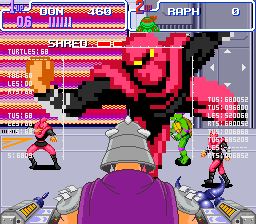
sin, the mathematical function. You feed it a value, and it gives you a value in return, that swings from -1 to 1 to back to -1 and so forth infinitely. Example:
Sin(1) = 0.8414709848
Sin(2) = 0.90929742682
Sin(3) = 0.14112000806
Sin(4) = -0.7568024953
Sin(5) = -0.95892427466
Sin(6) = -0.27941549819
Sin(7) = 0.65698659871
Sin(8) = 0.98935824662
Sin(9) = 0.41211848524
and so forth
This is because Sin is the Y height of a circle as you trace around the circle (where Cos is the X value... or I might have Y and X mixed up, doesn't really matter) like so:

This calculation cannot be done in the m68k processor of the genesis quickly enough (this is why Yoshi's Island uses a math co-processor for rotation of sprites) so, to fake it, they precalculated out Sin according to 255 radians (approximately a circle), and used the current value of Sin(X) as the offset for the pixels being drawn. So Row 1, at the top of the screen, is offset by Sin(1) which means they shift over a value similar to 0.8414709848 , while row 2 is offset by Sin(2) which means they shift over a value similar to 0.90929742682 and so forth. In actuality, to animate the rolling background, the value of the current row is also added to a figure that counts up as time goes forward, so the starting offset changes each frame.
Because of the way a unit circle works, you can get the values on the opposite side of the circle by negating the value of Sin. So, rather than store all the values of Sin from 0-255, they only stored 1/4 of the values and just multiply by negatives (which the genesis CPU can do quickly) to arrive at the correct values while only using 1/4 the rom space.
You are right but i only played the Genesis/Mega Drive version at the time and that doesn't have this particular effect
Still the superior version tho IMO
That's so weird - I was just looking at that gif from my own google search (thanks to your post). Thx for the cool posts. Wish you didn't have a junior member tag.
The only thing worse than Medusa Heads are Medusa Heads you can't really tell exactly where they're at. Such a neat little trick, one of the things that makes Bloodlines my favorite Castlevania (which is really saying something considering how much I love the series).
Adventures of Batman & Robin is shock full of neat tricks



Comix Zone! Especially this water!


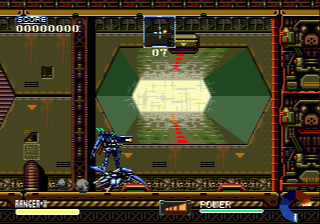
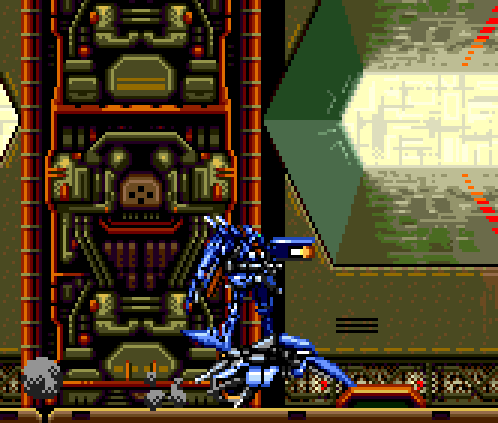
Seriously. Every level has some great effects, giving lots of visual variety. Bloodlines really shines in the aesthetics department.

And the audio department (In terms of both music and sound fx; it was Michiru Yamane's first CV game, and the Genesis sound chip was perfect for the meaty 'thwomps' and light 'twinkles' you'd want in a Castelvania game). And the difficulty department (Hard, but not excessively so). And the replay-ability department (two characters with diverging routes). Hell, I even like that they went ahead and made a level in a relatively modern, industrial setting (a munitions factory), embracing the game's WW1-era setting.
This is absolutely false, and a pet peeve of mine. Whenever people talk about DKC, they always dismiss the graphics because of pre-rendered sprites, when that's a terribly superficial way of looking at the game. Donkey Kong Country in fact does use tons of hardware-pushing tricks, far more so than most contemporaries on the SNES. Look beyond the sprites and you'll see DKC is do way, way more than the average SNES title.
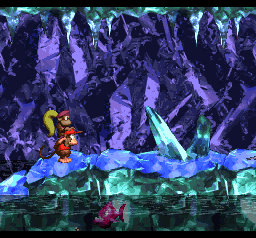


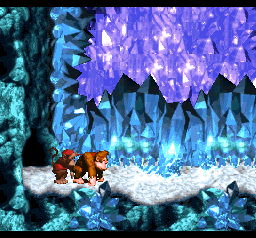

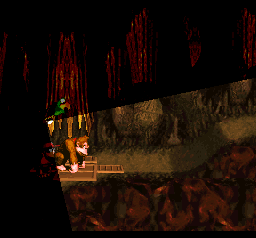
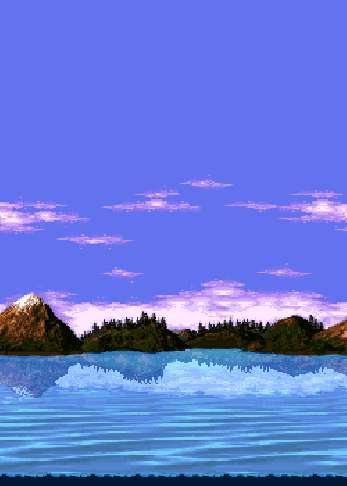
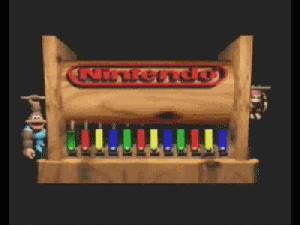

Yup. Especially how they incorporated it into the level design. Rocket Knight is easily one of the best 16 bit games made. So much creativity. Just jam packed with awesome ideasNot the best GIF, but Rocket Knight had these cool reflections.

Yeah there are a lot of cool effects in the games.






Freakin' Krejlooc dropping science and maths in this thread. Lovin' it, even if I don't understand all of it (it's been a while since I had a math lesson).
And the audio department (In terms of both music and sound fx; it was Michiru Yamane's first CV game, and the Genesis sound chip was perfect for the meaty 'thwomps' and light 'twinkles' you'd want in a Castelvania game). And the difficulty department (Hard, but not excessively so). And the replay-ability department (two characters with diverging routes). Hell, I even like that they went ahead and made a level in a relatively modern, industrial setting (a munitions factory), embracing the game's WW1-era setting.
The only thing I'm not crazy about in Bloodlines is the attempt to tie the Dracula novel to the Castlevania mythology... but in a weird way, it works, considering how much the series openly cribs from external sources.
I'll just link to my big post about it since I'm already kind of gushing; http://www.neogaf.com/forum/showpost.php?p=102462932&postcount=65

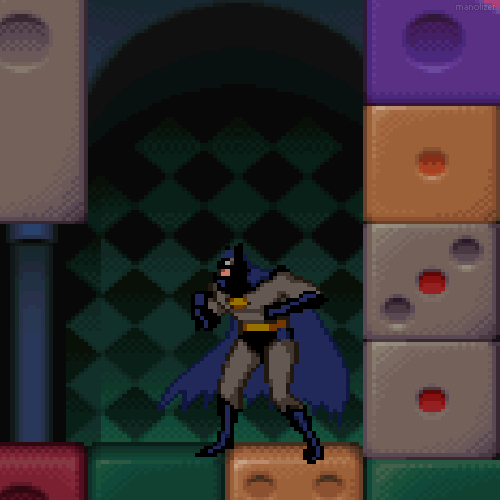
Adventures of Batman & Robin is shock full of neat tricks

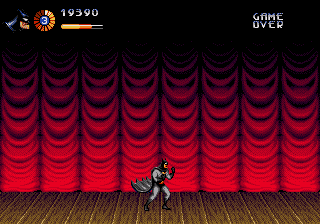
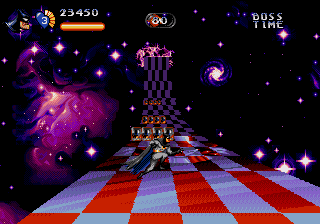


Ah, i remember loving this particular effect.
Everytime the parrot changed direction the screen would flash as the flashlight was momentarily in your face.
I remember hearing that they removed this flash effect in the VC version or something?
Meh, another reason i never bother with official emulation efforts.Yea i have dkc 1 and 2 on wiiU VC, no lightflash on turns with the parrot and glimmer the angler fish, it stuck out cos i remember that effect so much from playin these to the death as a kid. Doesn't bother me that much but it was a cool effect.

Ah, i remember loving this particular effect.
Everytime the parrot changed direction the screen would flash as the flashlight was momentarily in your face.
I remember hearing that they removed this flash effect in the VC version or something?
Meh, another reason i never bother with official emulation efforts.
Technically the audio was kind of underwhelming for a Konami game. Doesn't even use any of the extra 4 PSG channels, which makes the arrangement more sparse than they otherwise would be. Compare the music to Rocket Knight Adventures which Yamane also worked on which does use the PSG, and it sounds so much richer.
Also Eric plays much better than John, but I do appreciate the variety regardless.
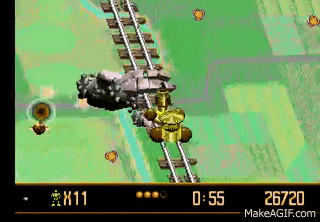

It's amazing to this day and age.As a kid this blew me away.

Sin, Cosine, Tangent, ArcSin, ArcCos, and ArcTangent are probably the mathematical functions I use most when working with graphics. Those functions let you freely calculate and convert angles, vector lengths, etc.
Really important stuff for video game graphics. All that stuff is what people typically learn in trig.
I remember when kids would ask when we'd ever use this stuff. To me, this is the fun kind of math.
